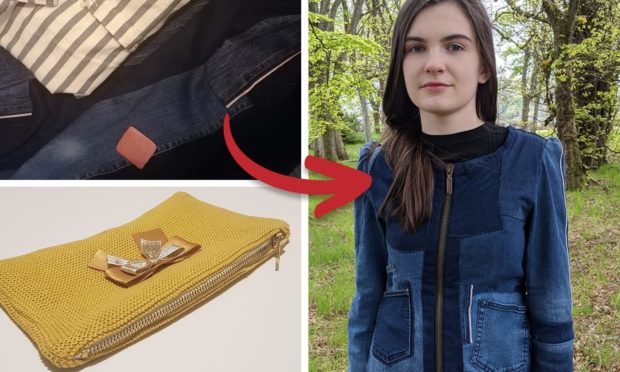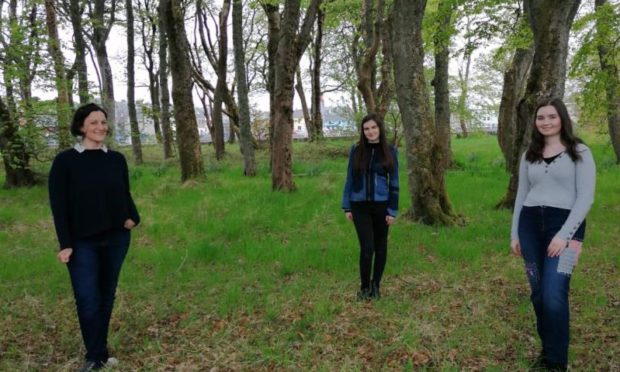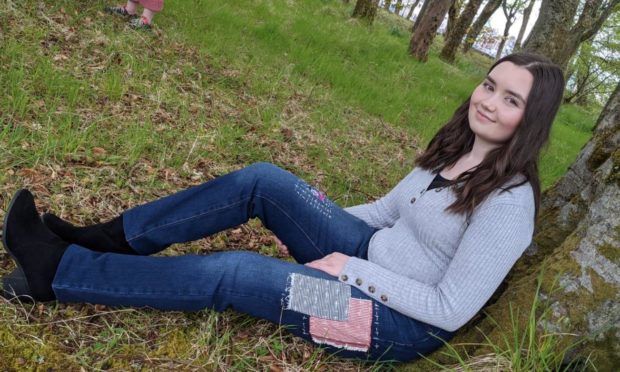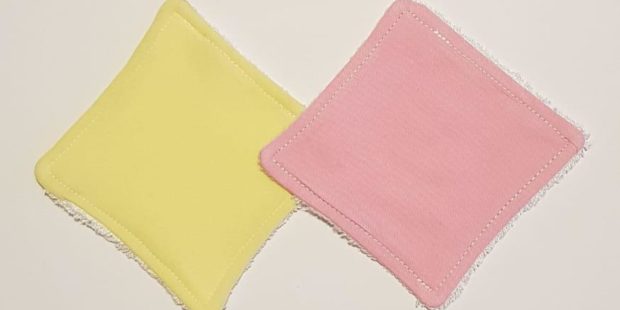A small island project is creating its own clothing label as part of a local fightback against global fashion waste.
Cruinn, based in the village of Bayble in Lewis, makes clothes and household items repurposed from unwanted garments and textiles.
It promotes the sale of second-hand, reworked clothes and provides alternatives to ‘fast fashion’ and overconsumption.
80% of discarded clothes go to landfill
Charity shops are popular places to stock and buy second-hand clothes.
But an estimated 80% of discarded textiles worldwide are sent to landfill, meaning only a fifth are reused or recycled.
Rebecca Smith took action after working as a lecturer on the sustainable development degree programmes at Lews Castle College, UHI.
This year, with help from Crown Estate Scotland, she started the Bayble Exchange.
Fittingly, a former shop was repurposed for the project. The old post office and general merchants closed many years ago, leaving a big gap in local life.
It is now a focus for swapping clothes, books, toys, and other goods.
It also sells a range of plastic-free or zero-waste items, including bamboo toothbrushes and shaving kits.
Four new recruits, including two design students from Lews Castle College UHI’s fashion: design & production course, are helping add value to second-hand donations.
It also highlights how sewing craftsmanship can increase the amount of clothing being reused and recirculated back into the economy.
‘We all have enough stuff’
Already, well-used toddler clothes have been made into re-usable make-up face cloths by fashion student Alison Graham, who also makes a range of purses from redundant fabric.
Lead designer Sandra Macleod, who set up the local company Modren, created a one-off denim jacket by reworking some old jeans and a shirt.
The project is also experimenting with the Japanese art of Sashiko. It uses patches, scraps, and simple stitches to mend garments multiple times over many generations.
Rebecca said: “I was becoming increasingly frustrated at teaching sustainability when what was required was practical change.
“The original project was set up on the idea that we all have enough stuff and we should allow people to exchange more.
“It is a big issue as more people are waking up to the textile disaster in the clothing industry over the last few decades.
“We are trying to tackle that problem on a local level by reprocessing textiles and adding value to them here on the island.”
The name Cruinn was put forward for the clothing label by Sandra Macleod.
She said: “Cruinn is a Gaelic name with two meanings, one is ‘circular’ which works well as we are ‘circulating’ clothes back into the economy.
“The second meaning is ‘to gather’ and ‘assemble’, again resembling well what we are trying to do with clothing on the island.”
The creation of a new island eco brand
The Gaelic name establishes Cruinn as a Scottish island eco brand, selling reworked products at the Bayble shop and online. Second-hand sales are promoted online via clothing apps.
While feedback is positive, there is work to do.
Rebecca said: “At the moment there is not a huge interest in buying second-hand clothes. People are still comparatively more comfortable buying new.
“There are issues with people changing their habits. So we need to work on highlighting the waste involved.
“We are trying to find solutions that can engage people in ways that are creative and fun. Textile repurposing is one way we can do this.”
We need to work on highlighting the waste involved.”
The initiative provides a great opportunity, according to Alison Graham.
She said: “Turning unwanted, pre-loved items, into new desirable items is a really good way to reuse textiles. It also shows people the benefits of recycling items, instead of throwing them away.
“The Bayble Exchange project has given me a fantastic opportunity to find work experience on the island.”
According to Zero Waste Scotland, people in the UK buy more clothes per head than any other country in Europe.
Over two tonnes of clothing is bought each minute.
30% of clothing has not been worn for a year
A report by the Waste and Resources Action Programme (WRAP) says the average UK household owns around £4,000 worth of clothes.
However, around 30% of clothing has not been worn for at least a year.
It estimates £140 million worth (350,000 tonnes) of used clothing goes to landfill in the UK every year.
Helen Lavery, regional engagement manager for Zero Waste Scotland, said: “It is encouraging to see another Highlands and Islands project focusing on reducing waste and reusing more.
“The more products we can reuse or recycle, the less pressure we put on precious natural resources.
“Reuse projects like The Bayble Exchange have even greater impacts across Scotland’s island and most rural communities.
“There is a growing awareness that a more sustainable, circular way of living is better for society and for the planet.”



